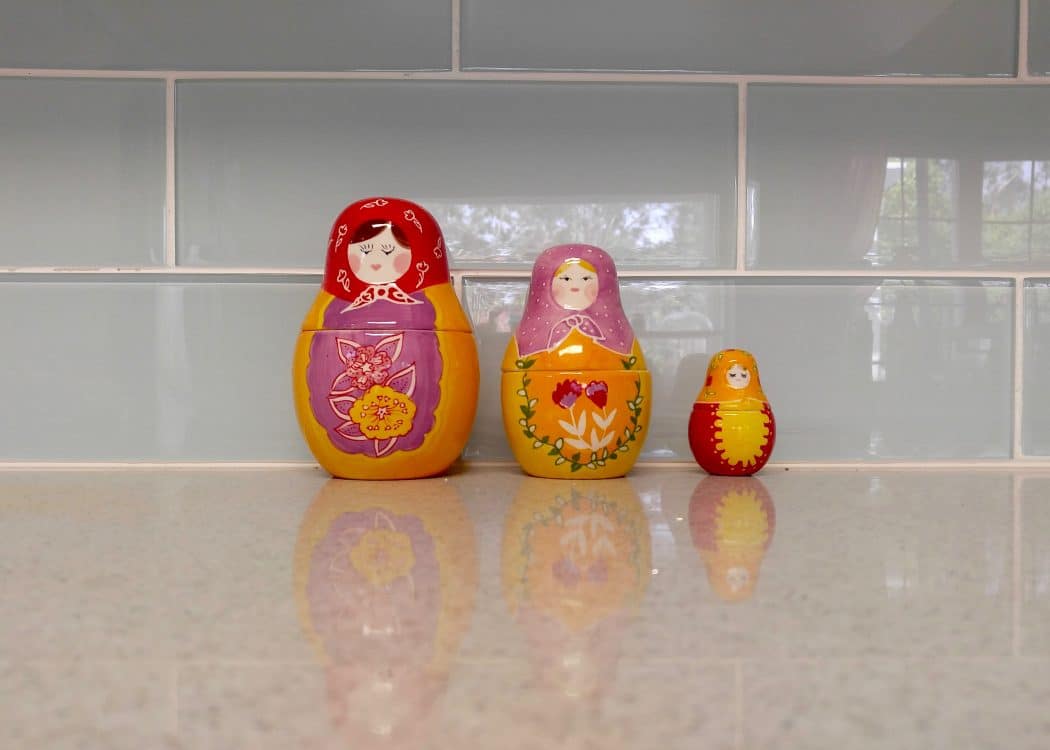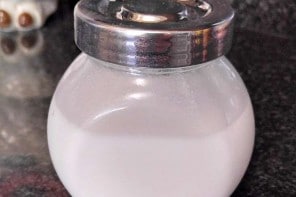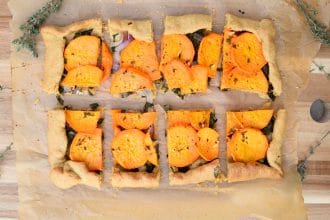I’ve always been intrigued by minimalism. I was attracted to the bright and clean aesthetic and the calm that it inspired. The idea of only owning what was necessary made perfect sense. What was the purpose of all the extra stuff anyway?
After feeling like I was constantly trying to tame the clutter, I found Marie Kondo’s book The Life Changing Magic of Tidying Up. You can read about my tidying here. It served as my own introduction to minimalism and it was awesome to find advice for the type of decluttering that I wanted. I didn’t just want to organize my space, I wanted to only own what I needed and loved.
My home is far from perfect, and I’m not sure if some would even call it minimalist. With a husband that doesn’t share my minimalist goal and a child, there still seems to be plenty of clutter and stuff. But I think that keeping minimalism as my own intention, it has resulted in the transformation of my home.
The ideas behind minimalism are to own less, buy less, live more, and to dwell in an environment that exudes calm.
Own less stuff.
I feel like stuff just accumulates almost out of nowhere. Junk drawers overflow with random and broken items that never seem to be used, closets quickly start to burst at the seams, and little piles of things just seem to appear around the house. But out of all of that stuff, what do we actually need, use, and love?
First, why do we keep the junk? Perhaps we think it may be useful one day. Perhaps we feel guilty for getting rid of a gift. Perhaps we just believe that we are “supposed” to own it. Or perhaps the thought of sifting through all of it is just too overwhelming. Once we get real with ourselves and examine each item in our home with honesty, we can let go of the stuff.
Room by room, category by category, consider each item in your home. Did you remember that you have it? Do you use it? Do you love it?
Buy less junk.
In a society that values consumerism, buying only what we need can be difficult. The latest models of phones come out every season, there are fantastic sales at shops every few weeks, fashion is always changing, and we even use shopping as a way to socialize and kill time.
But all that random cheap stuff that we accumulate has some major downsides. Most obviously, it creates more clutter and adds to the piles of things we just don’t need. It also devalues our belongings. We are left with many cheaply made things that we simply do not value, do not take care of, and that will fall apart sooner rather than later. And all of this stuff eventually ends up in landfills with the other piles of discarded junk that is a direct result of mass consumerism.
Of course, sometimes we need something new. But a significant aspect of minimalism is to buy things that are better quality and that you actually love. If we own only one or a few item, we are more likely to truly care for those items. For example, instead of buying a set of knives, consider one high quality chef’s knife that will last forever and serve many purposes. That chef’s knife will most likely be lovingly hand washed instead of left to rust in the sink. Or, instead of buying several cheaply made t-shirts that will soon fall apart, consider one high quality, organic cotton shirt that will last and that lessens the impact on the environment. Chances are that those t-shirts will end up folded and clean more often than not.
Be calm.
Our environment should help us to feel calm. After all, who wants to come home after a long, stressful day to be surrounded by more stress? Disorder and clutter has a profound effect on us mentally, leaving us feeling overwhelmed and stressed. In a home that doesn’t have too many things and is free of clutter, we are giving our minds a break and a chance to relax.
Minimalism usually dictates that our environment is made up of clean lines, simple designs, and few colors. And I think that, to an extent, these are all good things to have in a home. Simple and plain items can definitely give the feeling of clean calm to a room, but it is more important that the few things that you choose to have, you consider to be beautiful and truly love. If you love the intricately decorated table rather than the plain white one, by all means buy the one you love. After all, you want your home to be calm but to also make you happy. But consider balance and choose neutral colors for the walls or for cabinets. This also helps to keep the appearance of the home clean and peaceful.
Live more.
Without stuff, there is less to hold you back and, hopefully, more money for experiences. Buying less has the happy result of more money in your pocket. Many people adopt minimalism solely for the purpose of living and experiencing more.
Children, for example, do not need a ton of toys. Instead of mountains of things, kids benefit more from experiencing life around them. Playing outside with items found in nature will teach kids much more than yet another blinky and noisy toy. They also thrive with the inclusion of down time and free play in their daily schedule. Over-packing a kid’s day with activities can be draining for both kids and parents. Letting minimalism spill over into a child’s day ensures that they have the time to be calm.
Us adult can benefit from the influence of minimalism as well. Instead of cleaning or shopping or trying to stay busy, we should be reading, going for walks, taking forever to drink a cup of coffee, going on hikes, going to museums, traveling, meeting friends, and giving ourselves free time.
This is my favorite aspect of minimalism. Because in living simply, we are given the opportunity to slow down and truly live.





